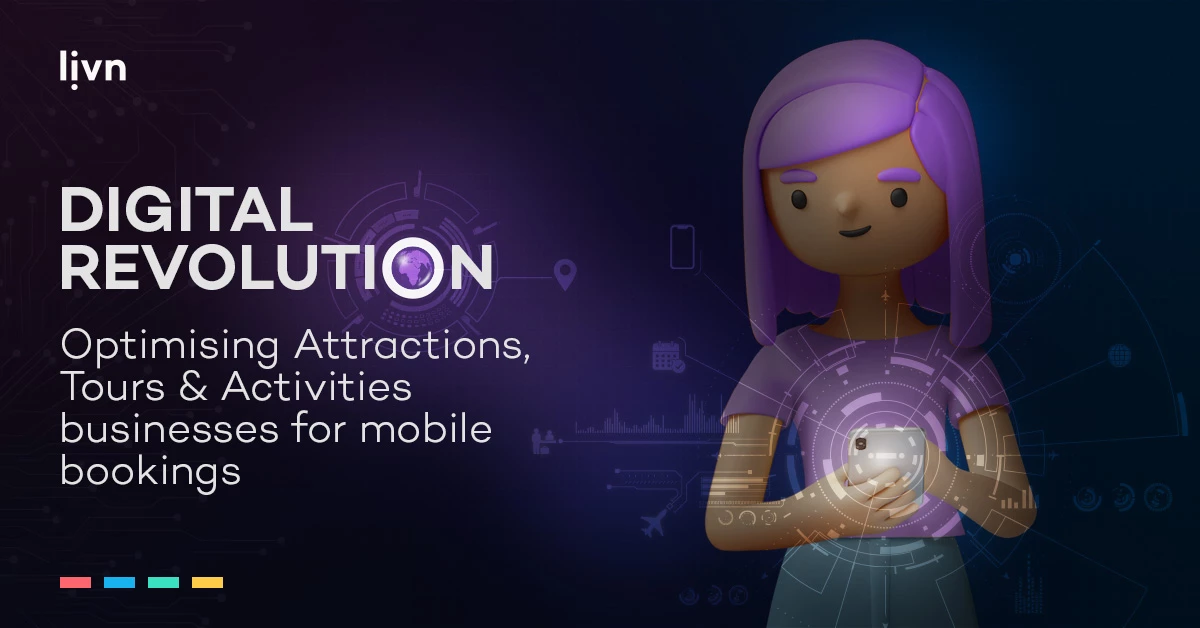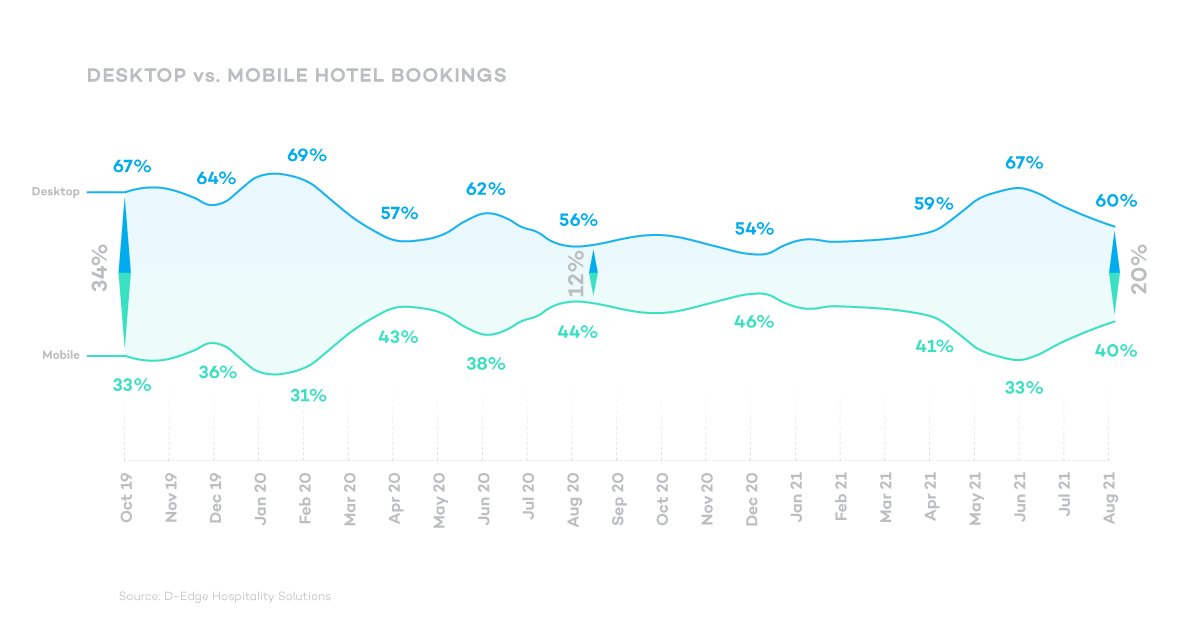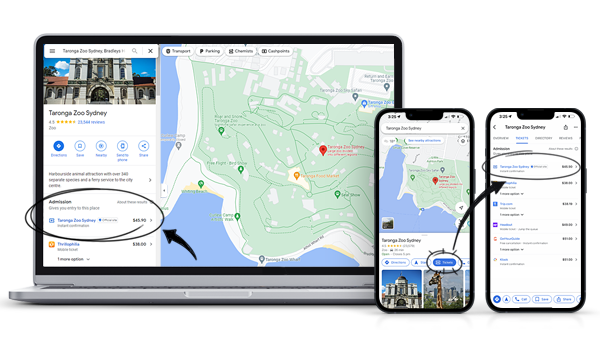
Digital Revolution: Optimising Attractions, Tours & Activities Operators for Mobile Bookings
Digitisation has continued beyond just businesses. Now, consumers are more tech-savvy when booking their travel. According to Skift, there is less of a disparity between desktop and mobile bookings than there previously was, which looks set to continue into 2023. So, while the rise in mobile usage is not new, travellers, and consumers, feel more comfortable completing larger purchases like holidays on a mobile device.
In this article, we will look at how tours, activities and attractions operators can leverage mobile to encourage more traffic and bookings.
Travellers are using mobile now more than ever
For operators, the solution to this demand lies in providing a seamless mobile customer journey from the first click to checkout. That is where programs like Google’s ‘Things to do’ play a key role in facilitating direct bookings.
And it comes at a time when digitisation has become a critical part of business and a consumer’s purchasing experience. For airport passengers, data from the 2022 Passenger IT Insights shows that 41% of travellers use kiosks and e-gates for identity verification. Meanwhile, 29% utilise mobile notifications for baggage pick-up.
As for hotel bookings, data from Booking.com shows that 40% of hotel bookings were made via its mobile app, which has more than 100 million active users. And Skift’s research supports this kind of mobile activity. The graph below shows mobile hotel bookings were up to 7% overall between October 2019 and August 2021.
Google Maps and ‘Things to do’ can help you implement a mobile-first strategy
With this upward trend in mobile usage, Google ‘Things to do’, makes it easy for businesses to connect with customers. Travellers can search on their phone for a local attraction or activity and book within minutes without finding a computer.
And as ‘Things to do’ joins Google Maps, there is more opportunity than ever for operators to be seen in search results and leverage more direct bookings for a mobile-first strategy.
Google Maps has always been a strong tool for travel, showing and marking hotels, restaurants, and significant Places Of Interest (POIs) like landmarks and frequently visited places. Now, operators that use POIs in their products, like a walking tour that visits the botanical gardens, or gives you access to the London Eye as part of the tour, will be visible to travellers who search for that location. Regarding brand exposure, Google Maps is one of the most downloaded apps, with over 10 billion from Google’s Play Store alone. And with the combination of ‘Things to do’, it’s an opportunity that can’t be missed. That said, there are some things you can do to optimise your profile for mobile booking, and with a fully optimised profile, your business is more likely to be at the top of the search results.
Regarding brand exposure, Google Maps is one of the most downloaded apps, with over 10 billion from Google’s Play Store alone. And with the combination of ‘Things to do’, it’s an opportunity that can’t be missed. That said, there are some things you can do to optimise your profile for mobile booking, and with a fully optimised profile, your business is more likely to be at the top of the search results.
5 Tips for Optimising Google My Business for Mobile
1. Claim your business
You can only fully optimise your business in Google if you own the name and account. Claim ownership of a business profile by clicking on the ‘Claim This Business’ option. This verifies your account, which allows you to customise the profile. Once you have done this, you can join platforms and programs like Google’s ‘Things to do’ platform.
2. Make sure your information is up to date
It is essential to have consistent and relevant information on your profile for several reasons, but most importantly, if you don’t, it can directly impact bookings. The correct opening times, contact details, and booking information are all things that travellers are searching for and need to know before they book your tour, attraction, or experience.
Top Tip: Ensure this information is consistent on social media and other partner sites.
3. Respond to Google reviews
Reviews are critical in establishing your reputation and authority, particularly for mobile bookings, because travellers look for immediate trust-building. Responding to reviews, good and bad reviews can highlight that you are an operator who cares and will promptly address any issues.
4. Upload your own content
Aside from your business and product information, content like photos, events, and updates also show up on your profile and can be an excellent authority builder for your profile. High-quality photos are great engagement opportunities that attract customers and let them know what you can offer. Think of it like another social media channel, and remember, Google prioritises regularly updated businesses with the most accurate information.
5. Geotag photos
Adding specific code to high-quality images of your tour, attraction, or activity can be an excellent way to tell Google where your products are. This is also known as geotagging and can improve visibility in search results. Make sure you are not uploading stock images; they need to be your own images of your business products to make the most impact.
With mobile booking gaining more traction, it’s becoming easier for operators to implement a mobile-first strategy with Google My Business. For tours, activities and attractions, Google’s ‘Things to do’ platform can offer even more opportunities for exposure in mobile results, more comprehensive control over distribution and more traffic and sales.
Learn more or register to Google’s ‘Things to do’ now by visiting: https://go.livn.world/register


